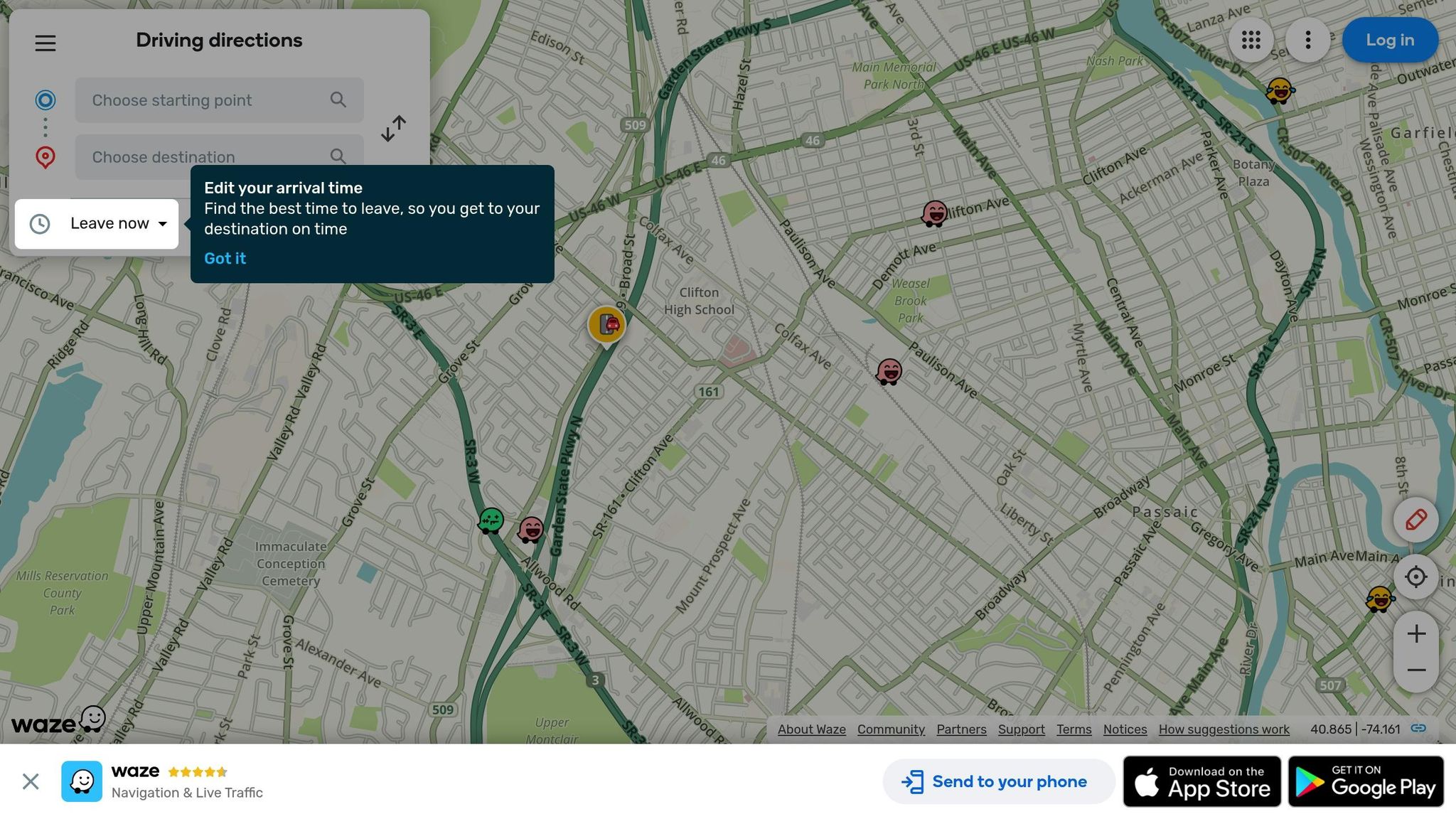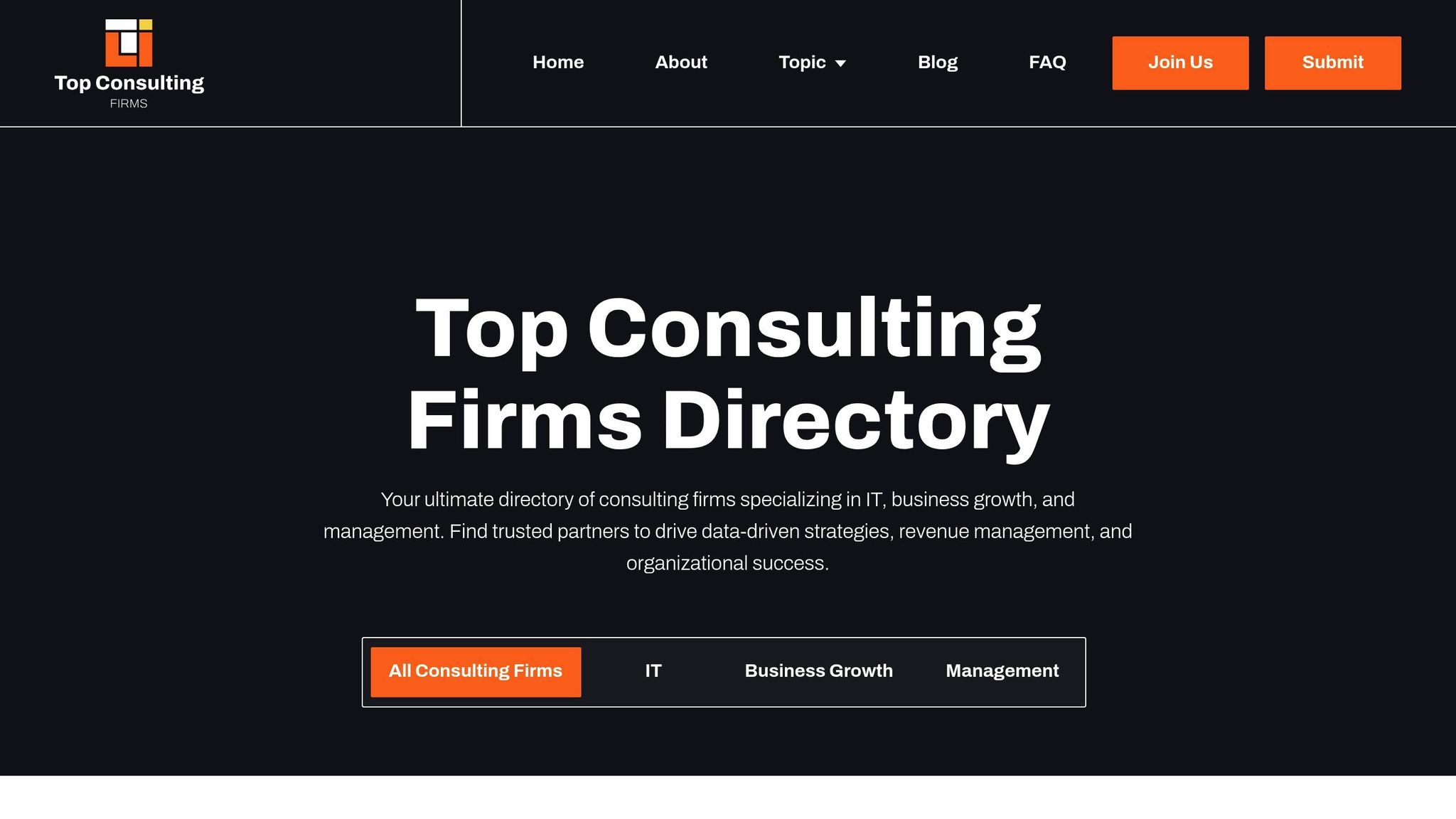Crowdsourcing communities bring together diverse participants to solve problems, share ideas, and contribute to business goals. They rely on external contributions rather than just internal teams, offering unique perspectives and solutions. Successful examples like Waze, LEGO Ideas, and Unilever Foundry showcase how businesses can use crowdsourcing to innovate, collect data, or create products. Key factors for success include:
- Clear Goals: Define the purpose and outcomes to guide contributions.
- User-Friendly Platforms: Ensure easy access and interaction to retain participants.
- Engagement Strategies: Use rewards, gamification, or recognition to motivate users.
- Quality Control: Maintain standards through tools, reviews, and feedback.
Each crowdsourcing model suits different needs, from real-time data sharing (Waze) to product design (LEGO Ideas) or competitive innovation challenges (Unilever Foundry). Consulting firms can help businesses design and manage these communities effectively, offering expertise in platform selection, incentives, and risk management. By learning from these case studies, organizations can achieve faster innovation, cost savings, and better engagement.
Crowdsourcing real life examples
Building Successful Crowdsourcing Communities
Creating a thriving crowdsourcing community isn’t just about gathering ideas; it’s about building a space where participants feel motivated, aligned, and empowered to contribute. This requires clear goals, an easy-to-navigate platform, and ongoing engagement.
Setting Clear Goals and Objectives
The foundation of any successful crowdsourcing effort lies in defining its purpose. Without a clear direction, participants may contribute ideas that miss the mark. By setting measurable goals that align with your mission, you provide participants with the clarity they need to make meaningful contributions.
A well-thought-out plan should outline both the purpose and the expected outcomes of the community. For challenges that are complex or may evolve over time, an adaptive approach is often the most effective. This allows for adjustments as new insights or priorities emerge, ensuring that the community stays aligned with its objectives.
Once these goals are established, the next critical step is to implement a platform that supports and enhances participation.
Creating User-Friendly Platforms
A user-friendly platform can make or break your crowdsourcing efforts. When participants encounter unnecessary technical hurdles, they’re less likely to stick around or share their ideas. An intuitive design that matches the needs of your project and the skill levels of your participants is essential.
The best platforms include features that encourage interaction and collaboration. Tools like forums, comment sections, and evaluation systems can help spark meaningful discussions and foster collective problem-solving.
Ease of access is another key factor. Whether it’s a dedicated section on your website or a standalone platform, making the submission process as straightforward as possible helps attract a broader range of participants. The more accessible your platform, the more likely you are to receive diverse and plentiful contributions.
Case Studies: Successful Crowdsourcing Communities
Waze, a navigation app built on user-contributed traffic data, has revolutionized how people navigate their daily commutes. Here's a look at how Waze's crowdsourcing approach reshaped the navigation industry.
Waze: User-Generated Traffic Data

Waze relies on real-time input from its users to deliver up-to-the-minute traffic updates, road conditions, and navigation assistance. A defining moment for the app came during the July 2011 "Carmageddon" event in Los Angeles. With major highway closures causing massive traffic disruptions, Waze positioned itself as an essential tool for navigating the chaos. This led to a surge in downloads and a significant boost in user adoption, demonstrating how crowdsourced data can change the game in high-pressure situations.
Google recognized the potential of Waze’s model, acquiring the company in 2013 for $1.3 billion. This acquisition underscored the commercial viability of crowdsourced data. By the end of 2018, Waze had grown to serve over 115 million monthly active users, eventually surpassing 140 million users worldwide.
The app’s success is rooted in its network effect: as more users contribute data, the quality of navigation improves for everyone. Waze has further enhanced this effect through gamification features and partnerships with over 600 organizations via its Connected Citizens Program. These elements have helped refine the app’s accuracy and reliability.
sbb-itb-97f6a47
Comparing Different Crowdsourcing Models
Expanding on our discussion of effective community-building strategies, let’s dive into the different crowdsourcing models that drive success. Through case studies, we can see how various approaches engage participants and help businesses achieve their goals. Knowing these differences allows organizations to pick the model that best suits their needs and industry.
Innovation-focused models, such as Unilever Foundry and GE's Ecomagination Challenge, operate as competitive platforms for submitting specialized solutions. These models are ideal when businesses seek groundbreaking ideas or expertise they lack in-house. The competition format creates urgency, attracting highly skilled participants who are willing to dedicate significant time and resources.
Community-driven models, like LEGO Ideas, tap into the creativity of loyal fans. This approach fosters genuine engagement but requires consistent community management to keep enthusiasm alive. Success here hinges on the brand’s existing connection with its audience.
Real-time collaborative models, exemplified by Waze, thrive on continuous micro-contributions. Participants gain immediate value, such as improved navigation, while the platform collects massive datasets. The main challenges include maintaining data quality and ensuring users stay motivated over time.
Crowdsourcing Models Comparison Table
| Aspect | Unilever Foundry | LEGO Ideas | GE Ecomagination | Waze |
|---|---|---|---|---|
| Primary Goal | Startup partnerships | Product innovation | Clean energy solutions | Navigation data |
| Participant Type | Entrepreneurs, startups | LEGO enthusiasts | Engineers, researchers | Everyday drivers |
| Engagement Method | Business pitches | Design submissions | Technical proposals | Real-time data sharing |
| Incentive Structure | Partnership deals | Product royalties | $200M prize fund | Free navigation service |
| Time Commitment | Months of development | Weeks to months | 6-month competition cycles | Minutes per day |
| Success Metric | Partnerships formed | Products launched | Solutions implemented | User adoption rate |
| Platform Complexity | High (B2B focused) | Medium (creative tools) | High (technical specs) | Low (mobile-first) |
| Community Size | Thousands of startups | Millions of fans | Industry professionals | 140M+ active users |
| Scalability | Limited by resources | Moderate growth | Event-based cycles | Exponential network effects |
The financial investment required for these models varies widely. Waze’s smartphone-driven approach is relatively low-cost, while GE's $200M challenge demands significant funding. LEGO Ideas falls somewhere in the middle. Similarly, the technical complexity of each model depends on the type of data being handled, while participant motivation plays a critical role in ensuring engagement.
Participant motivation is a key factor in determining success. Waze users contribute because they see immediate benefits, like better navigation. LEGO fans participate for creative satisfaction and the chance to gain recognition. Meanwhile, startup founders engage with Unilever Foundry for opportunities to secure partnerships and funding.
Scalability potential also varies. Waze benefits from strong network effects - each new user improves the service for everyone, enabling rapid global growth. On the other hand, competition-based models face scaling challenges due to the resources needed for evaluation and prize distribution.
Quality control methods differ across models. LEGO Ideas combines community voting with internal reviews to filter submissions. Waze relies on algorithms and user reporting to ensure data accuracy. Competition-based models typically use expert panels and structured criteria to evaluate entries.
Ultimately, there’s no one-size-fits-all solution for crowdsourcing. The best model for your organization depends on your industry, goals, resources, and relationship with your audience. By carefully assessing engagement methods, incentives, and platform features, you can select the approach that aligns with your objectives.
These insights pave the way for understanding how consulting firms refine and support these diverse crowdsourcing models.
How Consulting Firms Support Crowdsourcing Communities
When it comes to building and managing successful crowdsourcing communities, the challenges can often be too complex for in-house teams to handle alone. From platform design to engagement strategies and data management, the demands can quickly become overwhelming. This is where consulting firms step in, offering the specialized expertise needed to navigate these complexities and set the stage for success.
Consulting firms bring a wealth of experience and tested strategies to the table. They are well-versed in the intricacies of various crowdsourcing models and can help organizations sidestep common mistakes that often derail community-building efforts. Their broad, cross-industry perspective allows them to provide insights that might not be readily available within an organization.
One of the most impactful contributions consulting firms make is during the strategic planning phase. They work closely with organizations to establish clear goals, identify the right participants, and design engagement strategies that encourage meaningful contributions. These foundational steps are crucial for ensuring that a crowdsourcing initiative gains traction and delivers tangible results. Here's a closer look at how their expertise translates into actionable benefits.
Benefits of Professional Consulting
Consulting firms offer a structured approach that significantly improves the chances of success for crowdsourcing initiatives. They often start by conducting detailed feasibility assessments, examining factors like market conditions, competitive dynamics, and internal resources. This ensures that the initiative is built on a strong foundation.
A key strength of consulting firms lies in platform selection and customization. They evaluate various technology solutions, focusing on scalability, user experience, integration capabilities, and cost efficiency. Their recommendations are grounded in performance data, cutting through marketing hype to identify tools that truly meet the organization’s needs.
Another area where consultants excel is designing incentive systems that keep participants engaged over the long term. By understanding the motivations of diverse user groups, they craft reward structures that balance short-term gains with sustained involvement. This is especially valuable for organizations new to managing online communities.
Maintaining quality is another critical aspect. Consulting firms often implement multi-layered review processes that combine automated tools with human oversight. They establish clear guidelines for evaluating content and create procedures to handle disputes or problematic submissions, ensuring that community standards are upheld.
Additionally, consulting firms provide training and support for internal teams as they transition to managing more dynamic, community-driven approaches. This guidance helps ease the shift from traditional practices, ensuring a smoother adaptation process.
Risk management is another area where consulting firms shine. They identify potential challenges - such as participant disputes or technical issues - and develop contingency plans to address them effectively.
Using the Top Consulting Firms Directory

Selecting the right consulting partner is crucial for the success of any crowdsourcing initiative. The Top Consulting Firms Directory simplifies this process by connecting organizations with firms that specialize in areas critical to crowdsourcing, such as digital transformation, innovation management, and community building.
This curated directory highlights firms with expertise in digital transformation, a key consideration for organizations moving from traditional innovation models to community-powered approaches. These firms ensure that new technologies are seamlessly integrated into existing workflows, helping businesses adapt to modern demands.
Many of the firms listed also focus on driving revenue growth and enhancing customer acquisition - objectives that align closely with crowdsourcing goals like accelerating product development, reducing innovation costs, and entering new markets. Their proven track records in these areas make them valuable partners for maximizing the impact of crowdsourcing investments.
Strategic management is another strength of the featured firms. Crowdsourcing often requires significant organizational changes, and these firms have experience guiding companies through complex transformations. They help manage the cultural shifts needed to embrace external sources of innovation while maintaining operational efficiency.
The directory also emphasizes expertise in IT infrastructure and software development, ensuring that consulting partners can address both strategic and technical challenges in a cohesive manner. This is particularly important for organizations building custom crowdsourcing platforms.
Conclusion: Lessons from Successful Communities
Case studies reveal that thriving crowdsourcing communities don’t happen by chance - they're built with purpose, guided by clear goals, open communication, and consistent participant involvement. These communities have reshaped how organizations pursue innovation, showing that collaboration beyond company walls can lead to outstanding results when done right.
Key Takeaways for Businesses
The most effective crowdsourcing efforts share some common traits: clearly defined objectives and transparent communication that align participants' expectations with the community's mission. Successful communities also go beyond monetary rewards, offering participants recognition, opportunities to develop new skills, and the fulfillment of seeing their ideas come to life - key factors in fostering long-term engagement.
Additionally, user-friendly technology plays a crucial role. It should make participation simple while incorporating quality controls that maintain high standards without stifling creativity. For more complex challenges, working with professional consultants can provide the expertise needed to navigate obstacles effectively.
Moving Forward
These insights provide a solid framework for transforming crowdsourced ideas into actionable advantages. For businesses considering this approach, the benefits are hard to ignore. Crowdsourcing opens the door to fresh perspectives, faster innovation cycles, and cost-effective solutions that traditional methods often struggle to deliver.
Start by defining your goals and the outcomes you hope to achieve. Whether you're aiming for new product ideas, operational efficiencies, or better market insights, having a clear vision from the outset will guide decisions about platform design, recruitment, and engagement strategies.
Take inspiration from companies like Unilever, LEGO, GE, and Waze, which have successfully tailored crowdsourcing to their unique needs. Assess your organization’s objectives and, if needed, consider partnering with experts listed in the Top Consulting Firms Directory to ensure a smooth transition to a crowdsourcing model.
The successes highlighted in these case studies didn’t happen overnight, but they show that with a clear strategy, expert guidance, and ongoing commitment, crowdsourcing can unlock opportunities that traditional methods simply can’t match.
For organizations ready to embrace this approach, the potential for transformative results is within reach.
FAQs
How can a business choose the right crowdsourcing model to meet its goals?
To choose the right crowdsourcing model, begin by pinpointing your main objectives. Are you looking to spark new ideas, tackle specific problems, or cut costs? Different models cater to different needs. For example, crowd voting is great for collecting feedback or making decisions, while crowd creation shines when it comes to generating original ideas or creative content.
Think about the specific demands of your industry and make sure the model fits your audience and project goals. Customizing your strategy around these elements can boost both engagement and outcomes.
How do consulting firms contribute to building and managing successful crowdsourcing communities?
Consulting firms are instrumental in shaping the success of crowdsourcing communities. They help organizations craft strategies that encourage active participation, promote collaboration, and lead to creative problem-solving. By designing well-structured engagement frameworks, these firms ensure that crowdsourcing efforts are both effective and impactful.
Beyond strategy, they also focus on improving community management. This often involves introducing tools and processes that make operations smoother and enhance the overall experience for users. With their guidance, organizations can tap into the broad range of ideas and perspectives within crowdsourcing communities, turning them into meaningful results.
What are the key factors for building and maintaining a successful crowdsourcing community?
Creating a thriving crowdsourcing community hinges on cultivating a friendly and open atmosphere, maintaining transparent communication, and sharing regular feedback and updates with participants. These efforts help establish trust and ensure members feel appreciated and valued.
To keep participants engaged, it’s important to provide relevant incentives, bring in participants with the right skills or interests, and actively oversee and support the community. Ongoing care and attention are key to fostering long-term participation and collaboration.


